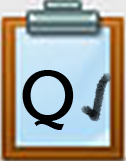Q3 Craft Your Story: Planning
INTRODUCTION TO Planning Your Story
This activity begins by previewing an example of a completed digital human interest narrative story that demonstrates the use of the planning document, script written at the bottom of it, and the storyboard deck used to plan it all out. The completed project video is also provided.
Effective stories have a structure so that information is presented logically. The kind of information you want to communicate will determine which type of story structure you will use.
The details of four different types of story structures (Educational Narrative, Fictional Narrative, Human Interest Narrative, and Personal Narrative) are listed on this page.
STEPS
1. Preview the three parts of the Human Interest Narrative Digital Story:
- Planning Document
(the activity on this page) - Writing the script and creating a storyboard
(the two activities on the next Script and Storyboard It! page) - Gathering media and creating the final digital product
( Quests 4 & 5)
Litter Beach Digital Story Example
- Example of the Human Interest Narrative Planning Document for the Litter Beach story with the script written out at the bottom.
- Example of the Storyboard for the Litter Beach Human Interest Narrative Storyboard
- Final Digital story created. This is an example of the completed human interest narrative digital story, The Litter Beach (1:58)
Now that you have reviewed a completed example, you will review each of the four types.
2. Review the elements of each of the four types of story structures in the Four Stories Structure box below.
3. Decide which one best matches the digital story you will create .
4. Make a copy or download the linked Planning Document for the Story Structure you have selected to use and save it to your file space.
5. Complete the Planning Table in the Planning Document you selected. Share this with your teacher when done.
6. Continue to the next page to write your script and create a storyboard.
Four Story Structures
Four Story Structures
When you have selected one of these story types, make a copy or download the Planning Document for that type of Narrative and save it to your file space.
Educational Narrative (Educational Narrative Planning Document)
- Factual information - Research-based information provided in the narrative
- Explanation - Additional details about the information is included
- Supporting evidence with examples - Specific examples are provided
Fictional Narrative (Fictional Narrative Planning Document)
- Characters - Any person, animal, or figure represented in the story.
- Setting - Where the story takes place.
- A sequence of events - Beginning, middle, and end, which includes the climax or most exciting part, a turning point, and events happening afterward
- Resolution - The conclusion of the story by the resolving of conflicts between characters
Human Interest Narrative (Human Interest Narrative Planning Document)
- Setting - Describe what life is like now.
- Problem - Introduce the problem.
- What could be - Show what life could be like.
- Solution - Propose a solution.
- Reward - Explain how the solution benefits your audience.
Personal Narrative (Personal Narrative Planning Document)
- The narrator - This is a personal story about the author.
- Setting - Where and when does the story take place?
- Problem - What obstacle(s) get in the way?
- Action - How does he or she try to overcome the problem?
- Solution - How was the problem solved?
- Ending - What did the character or narrator learn? How did he/she change?
Note: This is a copy of the Four Story Structures (Google document) and it is also available as a (PDF) to print out.
Competencies & Standards
MITECS Michigan Integrated Technology Competencies for Students, and
2. Digital Citizen
c. Demonstrate an understanding of and respect for the rights and obligations of using and sharing intellectual property
3. Knowledge Constructor
a. Plan and employ effective research strategies to locate information and other resources for their intellectual or creative pursuits
c. Curate information from digital resources using a variety of tools and methods to create collections of artifacts or solving authentic problems
4. Innovative Designer
a. Know and use a deliberate design process for generating ideas, testing theories, creating innovative artifacts or solving authentic problems
6. Creative Communicator
a. Choose the appropriate platforms and tools for meeting the desired objectives of their creation or communication
b. Create original works or responsibly repurpose or remix digital resources into new creations
d. Publish or present content that customizes the message and medium for their intended audiences
Websites and Documents
Websites
Videos from Outside Sources
21t4s Documents & Quizzes




